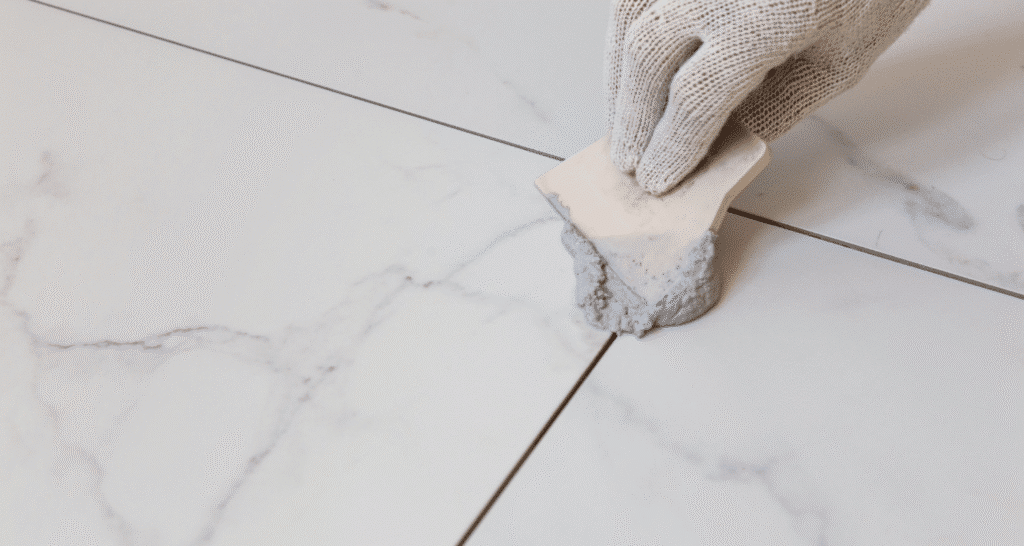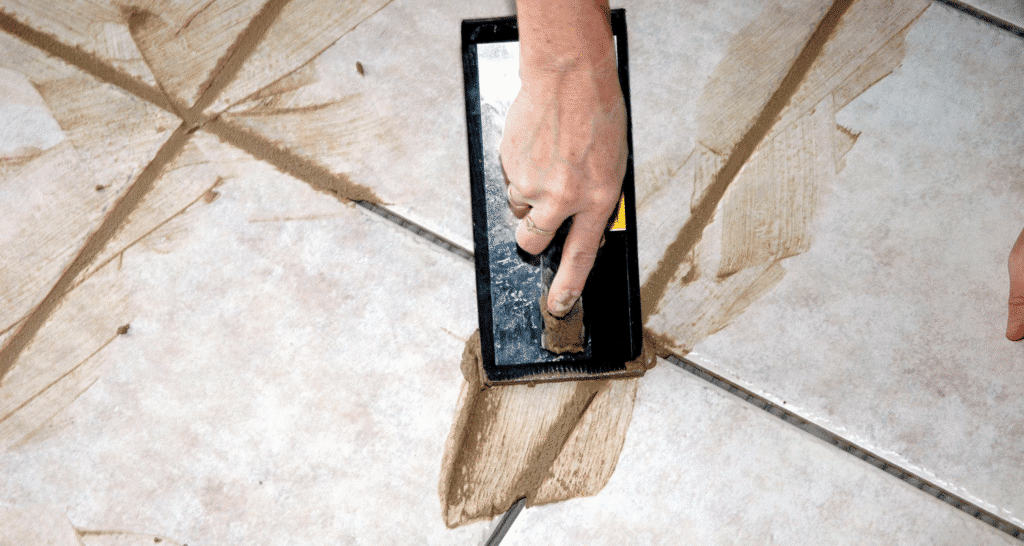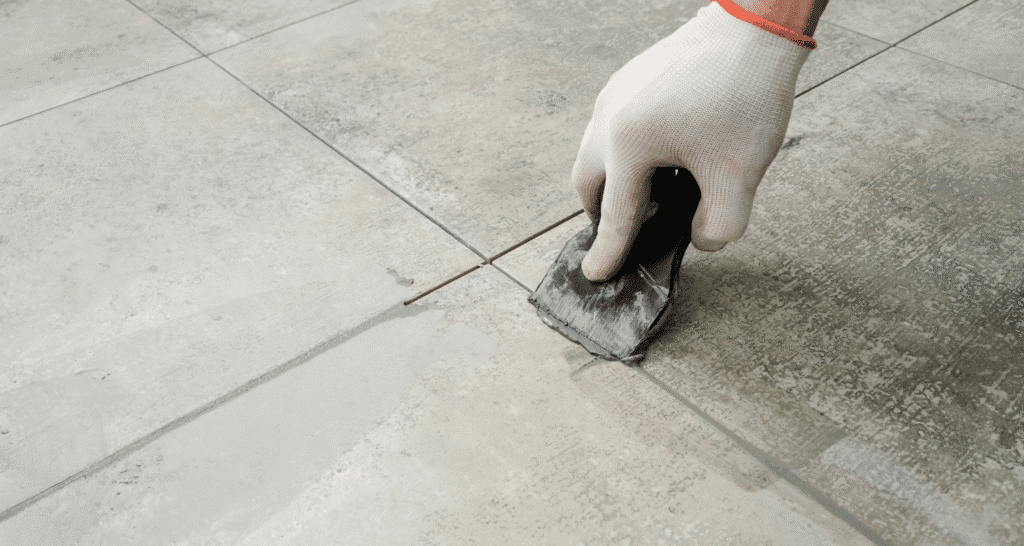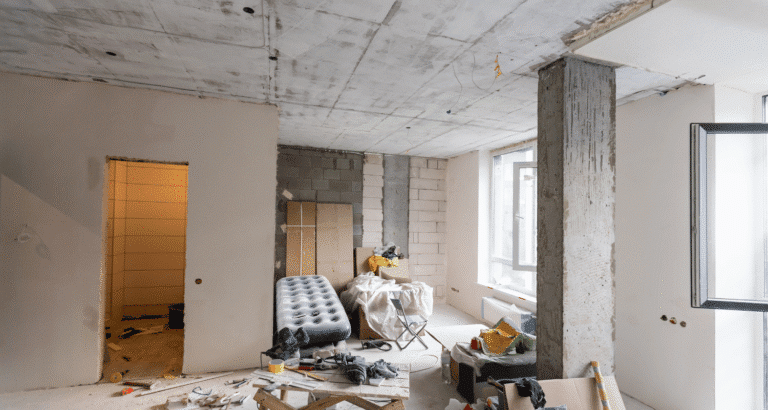Grout is vital to any tile installation for a durable, attractive, and structurally sound surface. Understanding how often does grout need to be replaced is essential, whether you are taking care of a kitchen backsplash, bathroom floor, or large commercial tiling job. Even the best grout can become worn or stained with age, water, and maintenance. Cracked grout can cause water damage, mildew, and loose tiles if ignored.
At Builders Group Construction, we focus on quality and attention to detail in every job, and knowledge of grout longevity is crucial to that commitment. In this guide, we will discuss how long grout generally lasts, common grout problems, the best tips for taking care of your tile, and when it makes sense to DIY grout replacement/repair vs. when to call in a professional.
Understanding Grout Lifespan
The life of grout depends on various factors, such as type, environment, artistry, and maintenance. Well-installed and sealed grout can typically last between 8 and 15 years. In low-moisture spaces such as hallways and living rooms, grout can stretch toward the higher end of that range. The life span may be shorter in humid areas such as bathrooms, kitchens, or the outdoors.
There are two primary types of grout: cementitious grout (generally used in residential tiles) and epoxy grout (which is more durable and moisture resistant, making it ideal for commercial spaces or high-use areas). Cementitious grout can last up to ten years with proper maintenance when sealed well. Epoxy grout can last 15 years or more and needs occasional checking and upkeep.
Signs of Grout Damage
It will also prevent the need for more expensive repairs by catching the signs of grout damage early. Here are the most common red flags:
- Cracking or flaking is a telltale sign that the grout dried out or wasn’t mixed and applied correctly.
- Discoloration: Nasty stains or dark blotches can indicate water invasion or mold.
- Grout lines: Water can move or damage tiles if the grout is broken or missing.
- Loose tiles: If the tiles move when you walk on them, the grout may deteriorate.
- Persistent mildew or mold: Even after cleaning, recurring mold suggests the grout no longer provides a water barrier.
- Crumbling or powdery consistency: The grout has started to deteriorate from within.
Regularly checking tiled areas, particularly where they may be wet or subjected to heavy foot traffic, will help catch these before they become problematic.
Regrouting Best Practices
Once grout begins to wear, it’s time to consider regrouting. Regrouting isn’t always about complete replacement; in many instances, a partial fix or a re-application of sealant can add years to its use. However, complete garage floor replacement may be better for cracking, deteriorating, or mold removal.

These are the best practices:
- Consider the damage carefully
- Work with the proper tools
- Clean the spot well
- Use the right grout type
- Spread grout evenly
- Seal the grout
- Follow the manufacturer’s instructions
Engaging a professional like Builders Groups Construction for longevity and kits in commercial buildings and large projects is best.
DIY Grout Replacement: When and How
If the repairs are minor, DIY grout replacement can be a budget-friendly solution. In cases where only a few small sections are affected, it may not be practical or cost-effective to regrout the entire area. Here are a few helpful tips for tackling small-scale grout repairs on your own:
- Dig out the damaged grout: You can use a handheld grout removal tool or an oscillating tool with a grout blade.
- Prep the area: Remove dust with a vacuum and wipe joints with a damp sponge.
- Prepare new grout: Read package directions.
- Spread the new grout: Push the grout into the joints at a 45-degree angle with a rubber float.
- Clean away excess: Wipe with a damp sponge before grout sets, and clean the haze with a dry towel.
- Cure as directed: Allow to sit for at least 24 hours per the product’s directions.
- Seal the grout: Once the grout has cured, it is better to seal it so that it will remain protected from potential water damage.
If you work in an area with high moisture, you may see significant structural damage and loose tiles. In this case, it is better to call in the professional Contractors.
How To Maintain Your Tiles And Make Grout Last Longer

Preventive maintenance is your primary defense against grout decay. Here are a few tile care tips that will make your grout last longer:
Seal It Often
Grout is moisture-absorbing and thus requires constant protection by sealing. Resealing should be done annually or after every two years, depending on the room and duration of usage. It is not a complex process that can make your grout stain-free and long-lasting.
Use Gentle Cleaners
Strong chemicals can be more harmful than helpful when it comes to grout. Products such as bleach and others might clean the surface quickly, but they loosen the surface with time. It is better to use a neutral cleaner with a pH of 7. It does the job and does not disintegrate the grout’s material.
Wipe Away Moisture
Water left on tile surfaces slowly soaks into the grouts, causing mildew and damage. Clear the area by using a towel after taking a shower or cleaning. It will take only a few seconds, but it will enhance the longevity of your grout.
Watch for Changes
Grout wear is not always evident immediately; therefore, it is important to check the grout regularly. Check interior rigid, difficult-to-reach edges of tubs or wall-mounted bathroom sinks, and corners where problems will develop first. Early warning is indicated by the discoloration or crumbling effect, where it is necessary to treat the grout.
Repair While It’s Small
Although the small crack does not seem urgent, it can lead to bigger troubles if not repaired in time. Repairing it in time prevents water entry that will ruin the underlying surface. Fast fixes keep your tiled regions in sanitary condition and prevent bigger fixes in the future.
For commercial facilities, professionals should conduct regular inspections and maintenance to guarantee that your tile system functions optimally.
Final Thoughts
The DIY method could work for smaller issues. Still, professional assessment is the key to spacious residential and commercial areas if you want durability and aesthetic appeal. Builders Group Construction can offer a complete range of tile services that meet all industry standards, including installation, repair, and regrouting. We are professional detailers. Our grout will be right for your space, properly installed and sealed, and last for years.
If your tiles look worse for wear, or your grout has seen better days, do not let them continue to rot away. Give us a call for an assessment and allow us to return your tilework to its former glory. Contact BGC for top-quality tile installation and regrouting that lasts the sands of time.
FAQs
How do I know when my grout needs replacing?
When the grout is cracked, loose, and falling out, it is no longer doing its job. It must also be replaced when the stains remain or the mold cannot be removed.
Is it ok to put new grout over old grout?
It could, but it is not the best. To achieve the best results, it is advisable to remove the old grout so that a good bond can be achieved and the finish will last longer.
How do you know when grout is bad?
Bad grout has turned red, flaked, or even stopped blocking moisture. You might even observe protruding tiles or mildew in the directions.
How do I know when to regrout?
Regrouting should occur when the installed grout is fractured, worn out, or discolored beyond cleanliness. It is also time to take action when tiles become loose or when there is a pool of water behind them.








